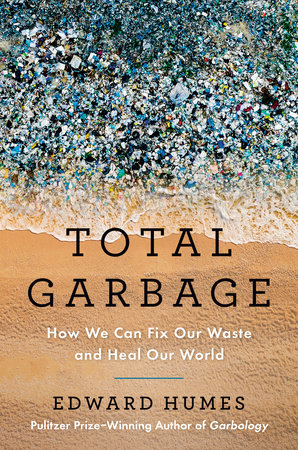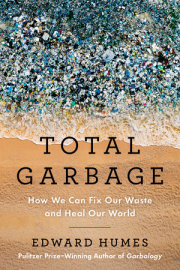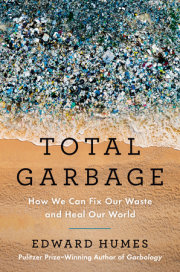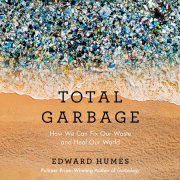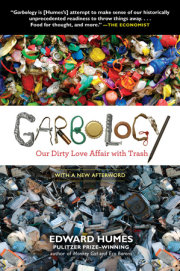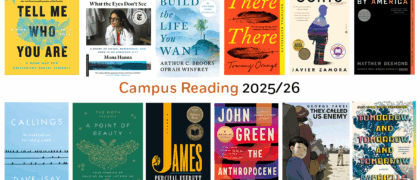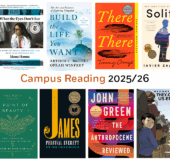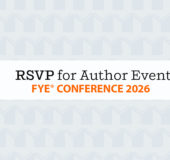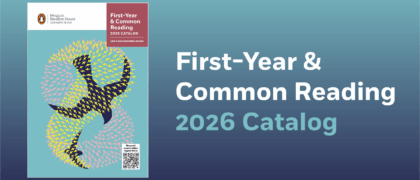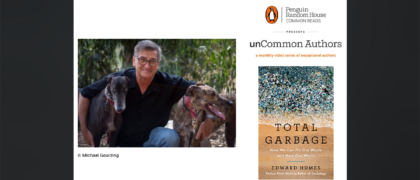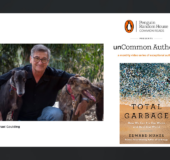1
Our Disposable Age
The innocent question that changed Ryan Metzger's life came the summer his son turned six. That's when Owen asked about the ever-expanding bag of old batteries in the junk drawer.
"What's going to happen to them, Dad?" he asked. "What are we supposed to do with them? We're learning about recycling in school. Where do these get recycled?"
"Um," Metzger said. "I don't know."
He knew where to get batteries, of course-everyone did. And there were always instructions on correctly inserting and using them. But instructions on what to do when they died? Not so much. That's why he fell into the habit of stuffing dead batteries into a drawer filled with all the other small, disused stuff that the family wasn't sure what to do with. As for bigger discards, there was a spot in the basement for those. And all the old paint cans and turpentine and lawn chemicals were collecting dust and rust out in the garage.
"It's heavy, Dad." Owen waved the bag of batteries around.
It was pretty full, Metzger had to admit. Detritus from flashlights and old toys, smoke alarms and remote controls, with a crusty one that came out of an old toothbrush, these batteries were one of many types of problematic garbage. They had no obvious final resting place, much like garden chemicals, old phones, light bulbs, car parts, cooking grease . . . a ton of stuff, really, now that Metzger thought about it. You weren't supposed to put any of that in the recycling bin. But you couldn't put it with the landfill-bound trash, either, although that's what many people ended up doing out of desperation or not caring or habit-or assuming (incorrectly) it would all somehow get properly sorted out by this impenetrable, mysterious entity called the waste management system.
"There's got to be a place for old batteries," Metzger assured his son. "Let's find out."
It took three phone calls to find a business near their Seattle home that would take their old batteries and ensure that they were actually recycled instead of just dumped somewhere.
Father and son decided to drive to this battery recycler so that Owen could make the delivery. On impulse, they asked a few neighbors if they had stashes of old batteries, too. Several did, so Ryan and Owen took those as well.
Owen was so delighted by this accomplishment that he and his father decided to make a regular project out of hauling one different type of problem trash every weekend to the right recycler, offering to do the same for neighbors in their Queen Anne section of Seattle. Almost any material we consign to limbo in our junk drawers, garages, cellars, and sheds holds value to someone, somewhere, Metzger figured-you just had to connect source and destination to transform someone's trash into someone else's treasure. So they started gathering bent clothes hangers one weekend, burned-out light bulbs the next, and then plastic bags, wraps, pouches, bubble wrap, and Styrofoam, none of which plays well with community recycling programs. They even started scooping up neighbors' unwanted Halloween candy after finding out about a local nonprofit, Birthday Dreams, which makes sure unhoused kids in the area get to have birthday parties.
Metzger soon realized that a lot of problem trash was accumulating out there, most of it various types of plastic that recyclers shunned, and that more people than he ever imagined were wishing someone like him would come along to take care of it. Demand kept expanding block by block as word got around about his little father-and-son project. Soon he had to create a subscriber email group to track it all, with a message going out each week on what sort of trash would be picked up next and when to leave it outside for pickup. They dubbed this "Owen's List."
Father and son were becoming full-fledged trash nerds. Owen's List was their crash course on the supply and demand of the trash and recycling industries as they became the missing link between what their neighbors thought was waste and the businesses that saw it as a valuable resource. Soon Owen's List grew a little too much. Over the holidays, they picked up close to a half ton of Styrofoam and over two hundred pounds of old Christmas lights-and he found recyclers who wanted all of it. Metzger marveled to his wife, "Who knew old Christmas lights even had a use?" (Recyclers shred them, then recover the copper and plastic for new products.)
Around this time, grateful subscribers to Owen's List who had long felt guilty about their secret trashiness started offering the duo money. A few suggested they charge for the service. "I'd gladly give up a couple lattes a month in exchange for you taking care of this," one neighbor said. "I bet a lot of people would."
Could that be true? Could their father-and-son hobby become a business that would let him leave his tech job behind and do something to help save the world? Seattle residents took pride in living in one of America's greenest cities, but would they really pay extra every month to change their trashy habits and help Owen's List patch a gaping hole in the waste and recycling system?
Metzger renamed the service Ridwell, to better explain its mission at a glance, and then set out to find out.
How Our Plastic Planet Was Born
Unlike metal, wood, clay, and glass, plastic does not occur in nature. It is a 100 percent human-made thing, a chemical concoction extracted from fossil fuels pumped from deep below the earth's surface, where they had been sequestered for hundreds of millions of years-nature's carbon capture machine. That credit card we are snacking on weekly is tangible proof that puny humans can indeed change an entire planet in a shockingly short amount of time, plasticizing the environment in a mere century. The phenomenon of plastic pollution mimics climate change-uncountable small bits of plastic that, like carbon dioxide and other heat-trapping pollutants, are local and inconsequential individually, but that, collectively swirled and spread far and wide by ocean and air currents, become a global plague that's everyone's problem. (It's worth noting that the amount of plastic we've pumped into the air, sea, and land pales in comparison to the trillions of tons of fossil fuel emissions we've released from geologic prison and spewed into the air for the last two hundred years. Just saying.)
So how did this plastic planet happen? How did we shift from an environment with zero plastic in 1924 to one in which plastic pollution became so pervasive by 2024 that we are imbibing it every day? Remarkably, this transformation took just two key events: first came the invention of a monumentally useful and durable synthetic substance; the second came decades later with the transformation of this triumph of materials science into the most insidious pollutant on the planet, tricking us all into spreading it everywhere without knowing it.
Stage one is a mostly happy fairy tale: the invention in 1907 of what was destined to become the first commercially successful, fully synthetic plastic. It took another fifteen years to perfect it, fight a patent war over it, and then bring it to market. But when it finally burst on the scene, this first unmeltable thermoplastic became one of the most revolutionary manufacturing advances in human history. And Americans knew a miracle when they saw one. Here's how Time magazine covered the sixty-eighth annual convention of the American Chemical Society at Cornell University in Ithaca, New York, on September 22, 1924, when the two stars of the show were celebrated chemist and inventor Dr. Leo Hendrik Baekeland and his breakout hit plastic creation, Bakelite:
Superficially, it is a composition, born of fire and mystery, having the rigor and brilliance of glass, the lustre of amber from the Isles. . . . It will not burn. It will not melt. It is used in pipe stems, fountain pens, billiard balls, telephone fixtures, castanets, radiator caps, etc. In liquid form, it is a varnish. Jellied, it is a glue. Those familiar with its possibilities claim that in a few years it will be embodied in every mechanical facility of modern civilization. From the time that a man brushes his teeth in the morning with a Bakelite-handled brush, until the moment when he removes his last cigarette from a Bakelite holder, extinguishes it in a Bakelite ashtray, and falls back upon a Bakelite bed, all that he touches, sees, uses, will be made of this material of a thousand purposes.
In an age defined by such transformative inventor-entrepreneurs as Edison, Tesla, and Ford, Baekeland was viewed as yet another science superhero who was transforming the world in ways so far-reaching and at such a tremendous pace that people of our era can scarcely comprehend it. US Civil War veterans were still marching in Fourth of July parades in Baekeland's time. Horses were still competing with cars, trucks, and electric trolleys to rule the streets of American cities. The electrification boom was just gearing up in urban neighborhoods, and it would take decades before rural America had significant amounts of electricity. What Baekeland offered may seem prosaic to modern sensibilities-what's more pedestrian in the twenty-first century than stuff made out of plastic? But it was seen as a magical material then, boundless in its potential, freeing civilization from the tyranny of nature and the limits of old-world materials.
Time's coverage of chemists gathered in Ithaca to honor Baekeland and ponder plastic world domination might now seem over the top, but it was in fact eerily prescient. Just substitute the word "plastic" for "Bakelite" to account for the thousands of different plastic formulations that followed Baekeland's creation, and every prediction in the article not only came true but turned out to be understated. Bakelite's most important use was in a host of industrial and infrastructure systems, including key components for the rapidly expanding electrical grid. But it's best remembered for its use in fashioning beautiful products, boldly colored with art deco designs: Bakelite clocks, jewelry, sculptures, fancy buttons, telephones, lamps, and iconic living room radio sets (first-gen entertainment centers that are prized by contemporary collectors). Streamlined house trailers and campers were built out of this gleaming material, looking like early prototypes for spaceships. Earlier plastics had replaced the extinction-driving harvest of ivory and tortoiseshell for billiards, pianos, combs, and eyeglasses. Plastic celluloid, the very first plastic, made movies possible, and another form of early plastic insulated thousands of miles of electrical cables for the transoceanic telegraph and telephone lines-the first World Wide Web. But Bakelite made plastic ubiquitous-and put the plastic industry on a trajectory to become the titan of wealth and pollution it is today, worth $1.2 trillion.
Baekeland got the full hero treatment from Time, including the requisite cover, featuring a dour headshot of the balding, Belgian-born chemist. The magazine portrayed him as a shy man of science more than a business tycoon, "a man in middle years, erect, rugged, taciturn," and, rather oddly, "with the sensitive mouth of a field marshal and the cold eyes of a philanthropist." He was, however, a more complicated character than the magazine suggested, an inventor whose earliest breakthrough was creating something very different: Velox, the first commercially successful photographic paper. He and his two business partners sold their business and exclusive rights to the revolutionary material in 1899 for what was then the fabulous sum of $750,000 to Eastman Kodak, then in the process of building its own pre-digital photography empire. Baekeland was in his mid-thirties at the time, and his share of the sale was worth about $8 million in 2023 dollars.
There was a condition to the deal, though: a noncompete clause, which meant no more photography-related inventions for Baekeland. So he decided to try his hand in the then-nascent field of polymer research. When asked years later why he chose a branch of chemistry he knew little about, Baekeland replied: to make money. And so he did, and a whole lot more. That noncompete clause changed the world.
He set out to invent a synthetic shellac, a protective finish for wood made from the waxy secretions of the female lac bug. Instead, out of his beaker came Bakelite. For that, he would be dubbed the father of the plastics industry. He is said to have popularized the term "plastic," too, from the ancient Greek plastikos-capable of being molded or shaped.
Baekeland sold his company in 1939 to the chemical giant Union Carbide, then best known for its Prestone antifreeze. That company in turn was eventually gobbled up by Dow Chemical, a major chemical and plastics maker. Baekeland retired to his winter estate in Coconut Grove, Florida, where he obsessively tended his huge tropical garden. Increasingly eccentric and reclusive in later life, he would eat food only if it had been stored in cans-never plastic-until his death of a stroke in 1944 at age eighty. Maybe the man who once said his surname translated into English as "land of beacons" sensed something about the dangers of eating plastic even back then.
If so, it didn't slow down the plastic juggernaut he set in motion. Modern life has been built on the back of the shapeshifting materials Baekeland and his successors developed. Without plastic, few of our most transformative technologies and products, for good or ill, could have gotten off the ground as we know them. First, it provided the combat boot soles, tank treads, radio sets, and thousands of other military tools, technologies, and weapons of World War II. Then came the invention of the slippery plastic coating later known as Teflon (along with its by-product, PFAS forever chemicals) in connection with the Manhattan Project's quest for the first atomic bomb. After the war, the stockpile of chemicals and manufacturing capacity built for the military were channeled into a plethora of civilian products: circuit boards and computer chips, high-speed data transmission, the internet, smartphones, spaceships and satellites, joint replacements, pacemakers, lifesaving arterial stents, and a host of other medical devices. Astronaut pressure suits, hazmat suits, wet suits, fiberglass boat hulls, surfboards, surf fins, surf wear-all require plastic, lots of plastic. Modern cars are half plastic by volume. There'd be no easy way to make renewable energy with solar panels or wind turbines without plastics. The list of plastic-dependent breakthroughs and everyday items is nearly endless. Just count each time you touch something that's made of plastic during a typical day and you'll see.
One quality that especially excited the engineers and product designers of Baekeland's time was plastic's near invulnerability. Certainly it can weather, wear down, or break through the application of force like any other substance. But plastic does not rust, corrode, or tarnish like metals. It does not shatter like brittle glass or ceramic. Wood termites don't bore into it. It never rots from bacteria or mold, as no microorganisms would or could digest, diminish, or be nourished by it. The tireless forces of decomposition and decay that prey on natural materials hold little sway over the synthetic power of plastic. No one had seen anything like it before. Chemistry had magicked something entirely unnatural into the world.
Copyright © 2024 by Edward Humes. All rights reserved. No part of this excerpt may be reproduced or reprinted without permission in writing from the publisher.

